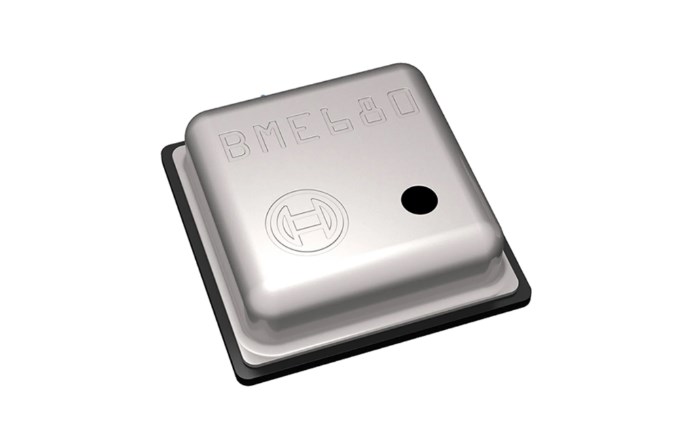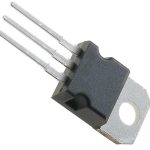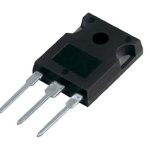Gas sensors play a crucial role in monitoring air quality and ensuring the safety and comfort of our environments. Among the many options available, the BME680 stands out as a comprehensive gas sensor module developed by Bosch Sensortec. In this blog, we will dive into a comprehensive overview of the BME680 gas sensor, exploring its features, accuracy, practical applications, pros and cons, and even comparing it with other popular gas sensors in the market.
What Is BME680?
BME680 is a sensor module developed by Bosch Sensortec. It combines four environmental sensors in a single package: temperature, humidity, pressure, and gas. The acronym BME stands for Bosch Micro Electro-Mechanical System, indicating the use of microtechnology in its design.
What is the function of BME680?
The primary function of BME680 is to measure and monitor various environmental parameters. It can accurately sense temperature, relative humidity, atmospheric pressure, and volatile organic compounds (VOCs) or gases present in the surrounding air. This makes it a versatile sensor suitable for applications in indoor air quality monitoring, weather stations, home automation systems, and more.
How accurate is BME680?
BME680 is known for its high accuracy. It provides temperature measurements with an accuracy of ±0.5°C, humidity measurements with an accuracy of ±3%, pressure measurements with an accuracy of ±0.12 kPa, and gas resistance measurements with an accuracy of ±0.12 kΩ.
Features
- Temperature sensing: Measures ambient temperature with high accuracy.
- Humidity sensing: Measures relative humidity to monitor moisture levels.
- Pressure sensing: Measures atmospheric pressure to provide weather-related information.
- Gas sensing: Detects volatile organic compounds (VOCs) and other gases, enabling air quality monitoring.
- Indoor air quality index: Calculates an air quality score based on the detected VOCs.
- Low power consumption: Designed for efficient operation in battery-powered devices.
- I2C and SPI interfaces: Supports easy integration with microcontrollers and communication protocols.
- Compact size: The small form factor allows for easy integration into various applications.
Practical applications
1. Indoor air quality monitoring
BME680’s gas sensing capabilities make it ideal for monitoring and assessing the quality of indoor air in homes, offices, and public spaces.
2. Weather monitoring
BME680 can provide accurate temperature, humidity, and pressure measurements, making it suitable for weather stations or environmental monitoring systems.
3. HVAC systems
BME680 can be used in heating, ventilation, and air conditioning (HVAC) systems to optimize energy consumption and maintain comfortable indoor environments.
4. Smart homes
It can be integrated into home automation systems to control ventilation, heating, and cooling based on real-time environmental data.
– Personalized weather forecasting: By collecting local weather data with BME680, personalized weather forecasts can be generated for specific locations.
Datasheet
Click here now and you can get a document about BME680 so that you can learn more about it.
Pin out

Pros and Cons
Pros:
- Multiple sensor capabilities in a single module
- High accuracy for temperature, humidity, pressure, and gas measurements
- Low power consumption
- Compact size for easy integration
- Suitable for a wide range of applications
Cons:
- Limited gas sensing range compared to specialized gas sensors
- Requires calibration for accurate gas measurements
- Relatively higher cost compared to individual sensors
BME680 vs CCS811 vs SGP30
BME680 and CCS811 are both capable of measuring gas resistance, but BME680 offers additional temperature, humidity, and pressure sensing capabilities. SGP30, on the other hand, is focused solely on gas measurements.
BME680 has a wider operating temperature range (-40°C to +85°C) compared to CCS811 (-40°C to +65°C) and SGP30 (0°C to +50°C). BME680 provides an indoor air quality index, which CCS811 does not offer. SGP30 measures total volatile organic compounds (TVOC) and equivalent CO2 (eCO2) levels. BME680 has a faster response time for gas measurements compared to CCS811 and SGP30.
The choice between these sensors depends on the specific requirements of the application and the desired sensor capabilities.
How to Monitor the Home Temperature&Humidity with BME680
To monitor home temperature and humidity with BME680, you would need to connect the sensor module to a microcontroller or single-board computer (such as Arduino or Raspberry Pi) using either the I2C or SPI interface. Here are the general steps involved:
- Connect the BME680 module to the microcontroller according to the pinout specifications.
- Install the necessary libraries or drivers for BME680 on the microcontroller platform.
- Write code to initialize the sensor and configure the desired measurement parameters (e.g., temperature and humidity).
- Set up periodic measurements and read the sensor data from the BME680 module.
- Process and display the temperature and humidity readings on a display or send them to a cloud-based platform for further analysis or visualization.
- Implement any additional features you require, such as logging data to an SD card or triggering alerts based on predefined thresholds.
It’s important to consult the documentation and specific programming examples for your chosen microcontroller or platform to ensure proper integration and usage of the BME680 sensor.

FAQs
What is gas resistance BME680?
Gas resistance BME680 is a type of gas sensor that is specifically designed to measure the resistance of various gases. It is an advanced, multi-purpose sensor module that combines temperature, humidity, pressure, and gas sensing capabilities into a single device.
What does BME680 measure?
BME680 measures four key environmental parameters: temperature, humidity, atmospheric pressure, and gas resistance. By monitoring these parameters, it can provide valuable insights into the surrounding environment and quality.
What gases does BME680 detect?
BME680 is primarily designed to detect volatile organic compounds (VOCs) and odorous gases, such as ethanol, aldehydes, and ketones. It can also detect non-combustible gases, like carbon monoxide (CO) and nitrogen dioxide (NO2).
What is the difference between BME688 and 680?
The main difference between BME688 and BME680 lies in the additional air quality index (AQI) feature offered by BME688. While both sensors provide similar gas sensing capabilities, BME688 includes an integrated hardware block for calculating the AQI based on the detected gas concentrations. This makes BME688 more suitable for applications that require monitoring and evaluation of air quality.
What is the successor of BME680?
The successor of BME680 is BME688. With the added air quality index feature, BME688 further enhances the gas sensing capabilities and provides more comprehensive environmental monitoring capabilities compared to its predecessor.
Conclusion
BME680 gas sensor emerges as a powerful tool for monitoring and assessing air quality in various applications. Its multi-sensor capabilities, high accuracy, and compact design make it a reliable choice for indoor air quality monitoring, weather stations, smart homes, and more. By providing real-time data on temperature, humidity, pressure, and volatile organic compounds, the BME680 empowers us to make informed decisions about our environment’s health and well-being.



